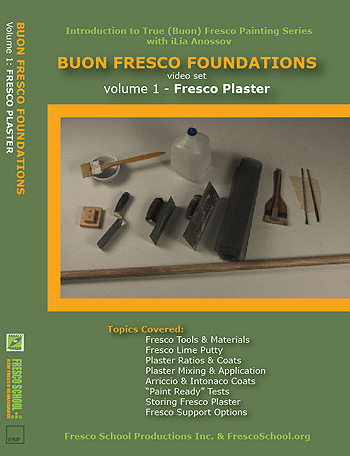BFF Volume 1 – Fresco Plaster is the essential tutorial and a must-have for the study of the medium of fresco. After over 17 years of practicing the medium and teaching, I have concluded that the cause of 95% of the problems and failures is the incorrectly prepared and applied final painting plaster coat (Italian Name – intonaco).
Any fresco plaster which proportions are available from various random sources, is suitable for painting a fresco (as long as it is calcium lime based). However each variant has its own set of advantages and limitations which are related to style and application.
For example, Diego Rivera painted on “Roman Plaster”, using plaster mixture proportions similar to the ones used in Pompeii – where 1 part of calcium lime was mixed with 1 part of fine marble dust. This plaster is white and smooth and could be found easy to apply, however it is also very dense and has limited absorption rate. In other words, it takes color very slowly and gives best results when a similar to a watercolor technique or very stylized design is used. This method requires formidable understanding of the medium and a good amount of practice painting using light delicate washes of transparent color or a particular style that employs very precise single layer, stencil like, application of mainly ornamental designs.
